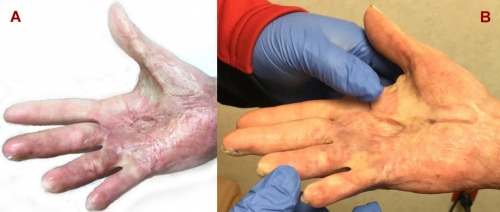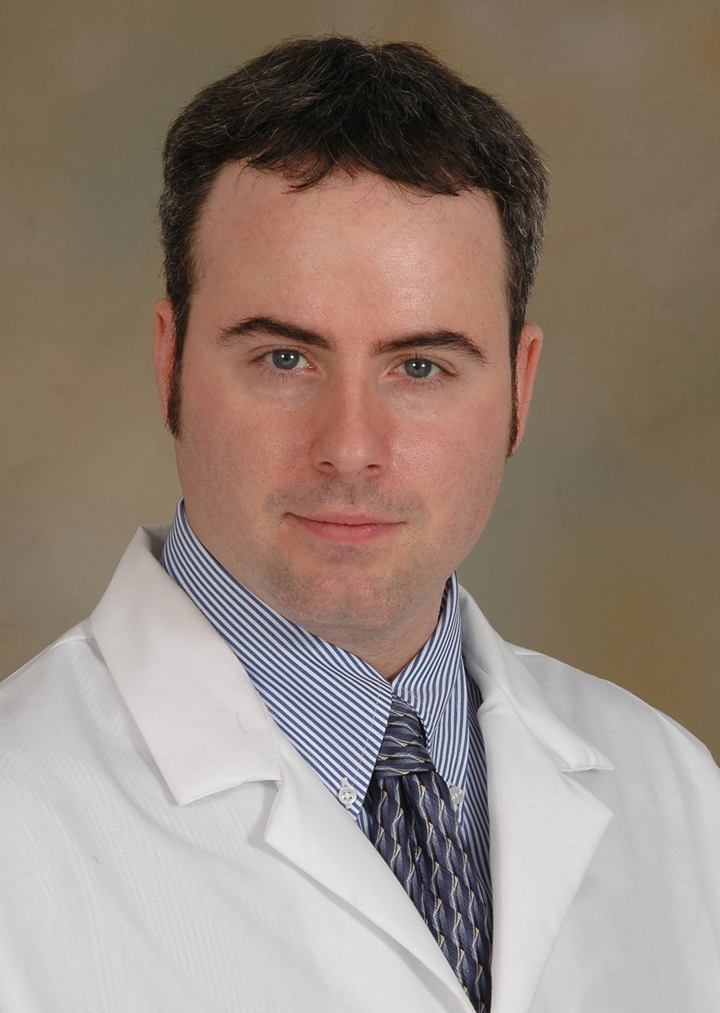We Are Leading the Way in Patient Care with Leading-Edge Technology
The Suffolk County Volunteer Firefighters Burn Center of University Hospital — the only designated burn care facility in Suffolk County — has recently acquired state-of-the-art laser technology for treating burn scars, called UltraPulse SCAAR FX.
This fractional CO2 laser has emerged in recent years as the premier tool for improving the texture and elasticity of severe burn scars.
The SCAAR FX laser technology allows for advanced treatment of a variety of severely damaged skin lesions that require synergistic coagulation and ablation for advanced resurfacing (hence, SCAAR).
"We are very pleased we can now offer laser therapy to modify burn scars when they occur," says Steven Sandoval, MD, assistant professor of surgery and medical director of the Burn Center, who led the initiative to acquire the SCAAR FX laser.
"For the last several years we have had to send patients to Nassau University Medical Center in neighboring Nassau County, and as far as Shriners Hospital in Boston, for this type of scar management.
We are the first in Suffolk County to offer SCAAR FX laser treatment for burn scars.
"Now we have, for the first time in Suffolk County, the ability to offer this care to improve range of motion, quality of life, and overall functionality."
For these reasons, the advanced laser technology that makes SCAAR possible is a welcome addition to the world-class care that Stony Brook University Hospital provides to the people of Suffolk County.
SCAAR FX laser treatment is minimally invasive, compared with surgical scar revision. It offers patients an attractive new option. Its power and precision enable Dr. Sandoval to customize treatments for all degrees of burn scars, from small to the most severe, with optimal comfort and healing time.
SCAAR FX uses a unique ablation/coagulation ratio to substantially improve the structure of deep contracted lesions by restoring more normal collagen deposition. This maximizes results, minimizes thermal damage, and reduces treatment time.

| A) Patient's hand following severe burn injury and subsequent skin grafts, showing residual hypertrophic scars — raised, thick, wide — with worst scar contracture (tightening of healed skin) patient had experienced. B) Hand after series of four treatments with SCAAR FX, showing reduction of scar tissue. Marked improvement in scar flexibility and functionality of hand was observed. (Click on image to enlarge.) |
SCAAR FX creates a pattern of small microscopic channels that break down the stiffness of the scar and triggers production of restored tissue representing normal skin.
The result is deep dermal regeneration that dramatically improves the elasticity and appearance of the patient's scar back toward normal skin.
When it comes to improving the smoothness and the little elevations that are so bothersome to the burn patient, and especially when it comes to the stiffness of the scar, the SCAAR FX laser has no competition, according to several experts in the field of burn care.
Recently, a panel of eight prominent American academic and military dermatologists and plastic surgeons with extensive experience in laser treatment of scars published a consensus report in JAMA Dermatology that concluded "laser scar therapy, particularly fractional ablative laser resurfacing, represents a promising and vastly underused tool in the multidisciplinary treatment of traumatic scars."
The Suffolk County Volunteer Firefighters Burn Center has approximately 200 inpatient admissions per year, with more than 1,500 clinic appointments last year. It is designed and equipped to meet the special needs of burn patients, and is certified by the American Burn Association. The original center, an eight-bed unit, was established in 1985.
The Burn Center quickly gained the enthusiastic backing of the volunteer firefighters of Suffolk County, who soon after the establishment of the Burn Center created the Suffolk County Volunteer Firefighters Burn Center Fund to help support special clinical and research initiatives. The Burn Center was renamed in 2013 in honor of their dedicated support of it.
| "Despite expert wound care and assiduous management with traditional therapy, poor cosmetic outcomes, restricted motion, and symptoms such as pain and itch are a pervasive problem of disfiguring and debilitating scars. The advent of ablative fractional photothermolysis [laser resurfacing] within the past decade and its application to the treatment of traumatic scars represents a breakthrough in the restoration of function and cosmetic appearance for injured patients, but the procedure is not widely used.… Changes to existing scar treatment paradigms should include extensive integration of fractional resurfacing and other combination therapies guided by future research." — "Consensus Statement," JAMA Dermatology (see article) |


